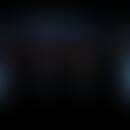Synonym(s)
DefinitionThis section has been translated automatically.
In the literature, angina nocturna is mainly defined as a nocturnal angina pectoris and/or sudden dyspnoea occurring during the night, from sleep or from a lying position (Herold 2020).
In a broader sense, this is understood to mean nocturnal thoracic pain occurring from sleep or from a lying position (Rajy 2005).
ClassificationThis section has been translated automatically.
Angina nocturna is divided into two main groups:
- Angina decubitus
- REM sleep induced angina pectoris (Stierle 2017)
Angina decubitus initially belonged to the group of unstable angina pectoris (Roskamm 1988), but according to more recent literature it belongs to the group of stable AP (Renz- Polster 2002).
You might also be interested in
Occurrence/EpidemiologyThis section has been translated automatically.
Information on the frequency of angina nocturna is not available.
EtiopathogenesisThis section has been translated automatically.
Angina nocturna in the broader sense is caused by a sudden decompensation between the demand and supply of myocardial blood flow.
The causes can be:
- acute coronary syndrome
- attendant left ventricular failure
- vasospastic angina pectoris
- Diseases of the A. coronaria sinistra
- beta-blocker-induced vasospasm
- propanol-induced angina nocturna
- severe aortic regurgitation
- sudden rise in arterial blood pressure
- severe anemia
- Sleep apnea (according to a study by Franklin et al., sleep apnea is found in 9 of 10 patients with angina nocturna [Pack 2002 / Franklin 1997]) (Rajy 2005)
angina decubitus
Angina decubitus is caused by an overload of the already damaged heart muscles (Füeßl 2010). In a study by Chen (2000) it could be shown that patients with angina decubitus already have left ventricular dysfunction. Left ventricular dysfunction was found in comparison to the control groups (group I: no AP, group II: with CHD but without AD, group III: patients with AD):
- the 1st filling fraction (1/3 FF) was significantly lower in group III
- the late filling fraction was increased in group III
- left ventricular end-diastolic pressure was significantly increased in groups II and III before and after left ventriculography (Chen 2000).
Presumably, a fluid backflow while lying down causes an increased ventricular wall tension due to the increased preload (Stierle 2017).
REM sleep induced angina pectoris
This form of AP is triggered by strongly fluctuating blood pressure values and pulse frequencies in the dream phase. Myocardial damage is not usually found (Stierle 2017).
ClinicThis section has been translated automatically.
The symptoms of angina decubitus occur while lying down / sleeping - preferably in the first half of the night - where, on the other hand, REM sleep-induced angina pectoris occurs predominantly in the second half of the night (Stierle 2017).
DiagnosisThis section has been translated automatically.
The diagnosis consists of a detailed anamnesis and the exclusion of coronary heart disease or angina pectoris (see also detailed diagnosis).
TherapyThis section has been translated automatically.
angina decubitus
The symptoms of AD usually subside quickly after the patient is put on the chair, as does the administration of a short-acting nitrate (Stierle 2017). Prophylactically, the preload can be reduced by diuretics (Stierle 2017) or by other drugs used to treat heart failure (Kasper 2015).
REM sleep-induced angina pectoris
In REM sleep-induced AP, beta-receptor blockers can be used therapeutically for prophylaxis (Stierle 2017).
LiteratureThis section has been translated automatically.
- Chen J et al (2000) The effect of left ventricular diastolic dysfunction on the pathogenesis of angina decubitus. Chin. Sci 15 (4) 214 - 216 PMID:12906140
- Franklin K A et al (1997) Reserval of central sleep apnea with oxygen. Chest (111) 163 - 169
- Füeßl H S et al (2010) Dual series: Anamnesis and clinical examination. Thieme Publishing House 198
- Herold G et al (2020) Internal medicine. Herold Publisher 240
- Kasper D L et al (2015) Harrison's Principles of Internal Medicine. Mc Graw Hill Education 1581, 1590
- Kasper D L et al (2015) Harrison's Internal Medicine. Georg Thieme Publishing House 1934
- Stierle U et al (2014) Clinical Guide to Cardiology. Elsevier Urban and Fischer 100
- Pack A I (2002) Sleep Apnea: Pathogenesis, Diagnosis and Treatment: Lung Biology in Health and Disease. Marcel Dekker Publisher 357
- Raju B S (2005) Clinical Methods in Cardiology. Orient Longman Publishing House
- Renz- Polster et al. (2008) Basic textbook on internal medicine: compact, tangible, understandable. Elsevier Urban and Fischer 64
- Roskamm H (1988) Nitroglycerin VI: unstable angina pectoris and extracardiac indications. Sixth Hamburg Symposium Walter de Gruyter 9 - 10
- Stierle U et al (2014) Clinical Guide to Cardiology. Elsevier Urban and Fischer 100
Outgoing links (1)
Beta-receptor blockers;Disclaimer
Please ask your physician for a reliable diagnosis. This website is only meant as a reference.




